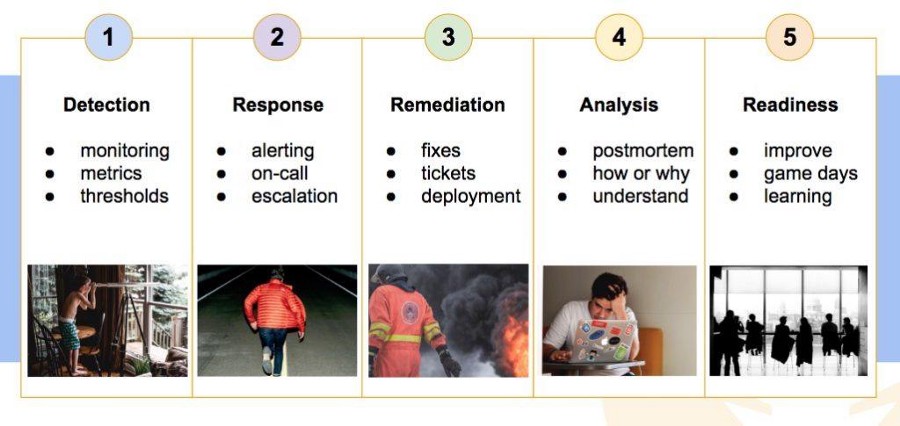Using ChatOps to Transform Enterprise Collaboration
With how quickly the field of operational tools continues to evolve, it should come as no surprise that new terms — and new types of tools — are constantly popping up. Some end up being more of just a fad and slowly fade away, while others stick around and become hugely important parts of the industry.
For example: ChatOps.
A term widely credited to GitHub, ChatOps is all about “conversation-driven development.” Let’s think about it in terms of a real-life enterprise organisation.
There are countless communication and collaboration platforms available for enterprises to facilitate contact between various parties. In the case of development, operations, and customer support teams — and the barriers that exist between them — organisations often “cite the lack of situational awareness as a primary concern.”
Issues with missing information and a reliance on manual communications can inhibit effective collaboration between Dev, Ops, and support staff — and this is where ChatOps comes in. Here’s how Muhammad Raza, a Stockholm-based technology consultant, breaks it down:
“ChatOps refers to a collaboration model that brings the communication and execution of software development and operational tasks within conversations on a common digital platform. It is a system that integrates the personnel, the existing work and technologies, processes and communications into a unified conversational environment. It is a communication structure that allows users to execute actions via internal robots on tools that are integrated within the communication platform.”
Pretty cool stuff, and extremely handy for improving collaboration and efficiency among Dev, Ops, and support teams. Here are a few ways the ChatOps model has revolutionized communications between these silos.
It enhances incident management and DevOps.
People are great. Tools are great. But using tools to empower your people to be even better? That yields amazing results.
ChatOps tools can dramatically improve communication among incident management and DevOps teams. When you consider that communication is the one constant through all five parts of the incident management lifecycle (see below), it’s easy to understand how ChatOps can be an ideal solution to many of the comms issues teams face on a regular basis.

“The Incident Management Lifecycle” from VictorOps
As an enhancement to incident management and DevOps, ChatOps tools — whether manual or automated — can help teams continue to improve their efficiency and response times.
It helps teams collaborate to solve day-to-day issues before they become incidents.
Even better than a quick incident response time? Resolving an issue before it ever has a chance to reach incident status.
While ChatOps can be either manual or automated, the automated tools are especially helpful for teams to set up efficient responses to common issues. Incident handling is difficult, often messy, and exhausting. So why not just implement tools that take care of issues automatically and reduce the number of incidents that get through at all?
When teams are able to detect issues early, they can quickly restore application services — and that’s a win for everyone.
It is a new way to work and replaces traditional email comms and processes.
For traditional enterprises and distributed operations teams, communication is usually done using emails and traditional online conferencing tools. However, we all know how much of a waste of time this can be: the average professional spends 28% of the work day reading and answering email.
By making contextual information available to all users in real-time, ChatOps supports collaboration between distributed teams. This makes the use of traditional comms and processes — like email — far less necessary. A senior DevOps architect and leader at eBay saw his email inbox shrink by 35% after implementing ChatOps for their team.
So, although this chat-based technology may seem to be fairly trivial or simplistic at its core, it has the potential to dramatically transform the collaboration style of any enterprise.
Who are the main players?
The ChatOps industry has expanded greatly in recent years, with new players entering the market and some older tools getting the axe (such as Atlassian’s fallen HipChat). Below are some of the current big names in this space:
Slack(San Francisco, California) is “a collaboration hub for work, no matter what work you do. It’s a place where conversations happen, decisions are made, and information is always at your fingertips. With Slack, your team is better connected.”
Basecamp(Chicago, Illinois) “organizes your communication, projects, and client work together so you have a central source of truth: everything will be in one organized place, everyone will be on the same page, projects will get off the ground faster, you’ll know exactly what’s going on, and you’ll free up time spent on meetings.”
Mattermost(Palo Alto, California) is “an enterprise messaging workspace for teams to collaborate securely and effectively. Our open source platform unifies desktop and mobile messaging, integrating with vital applications to enhance personal productivity, team alignment and organizational competitiveness.”
Microsoft Teams (Redmond, Washington) is “a unified communications platform that combines persistent workplace chat, video meetings, file storage, and application integration. The service integrates with the company’s Office 365 subscription office productivity suite and features extensions that can integrate with non-Microsoft products.”
Wire (Berlin, Germany) is “the most secure collaboration platform. Secure messaging, file sharing, voice calls and video conferences. All protected with end-to-end encryption.”
Riot IM (Formerly Vector; London, UK) is “a new workspace for the web that lets teams efficiently collaborate by bringing your conversations and productivity tools together.”
Zulip (San Francisco, California) is “the world’s most productive group chat. Zulip combines the immediacy of Slack with an email threading model. With Zulip, you can catch up on important conversations while ignoring irrelevant ones.”
Evolving with ChatOps
ChatOps is transforming the way DevOps teams work. Rather than utilizing traditional ops processes that involve endless context-switching and inefficient communication, these tools create shared conversational environments where teams can “stay focused, communicate in real-time, gain visibility, and speed joint decision making.”
Does your enterprise utilize a ChatOps tool for your DevOps team or the entire organisation? How has it helped you overcome day-to-day collaboration and comms challenges across your teams?
We’d love to hear your thoughts on the latest trends in the industry and where you see ChatOps heading next. Feel free to leave a comment below or reach out to us directly at enquiries@opsmatters.com.

